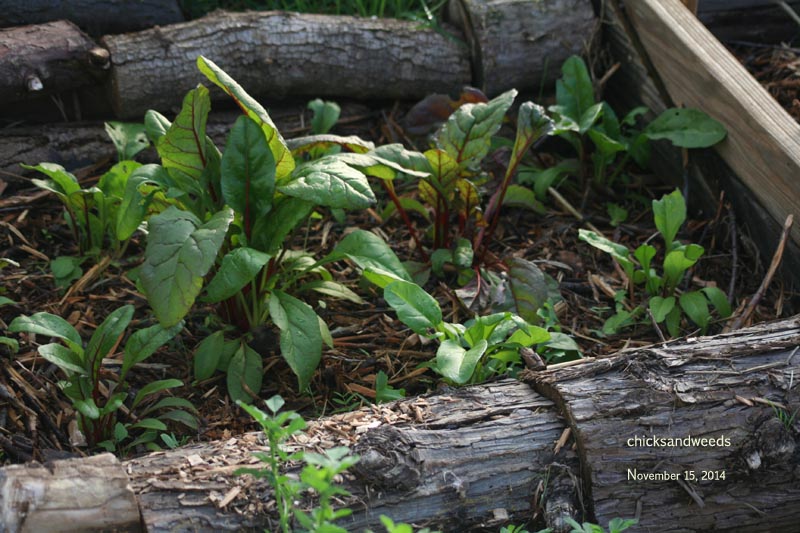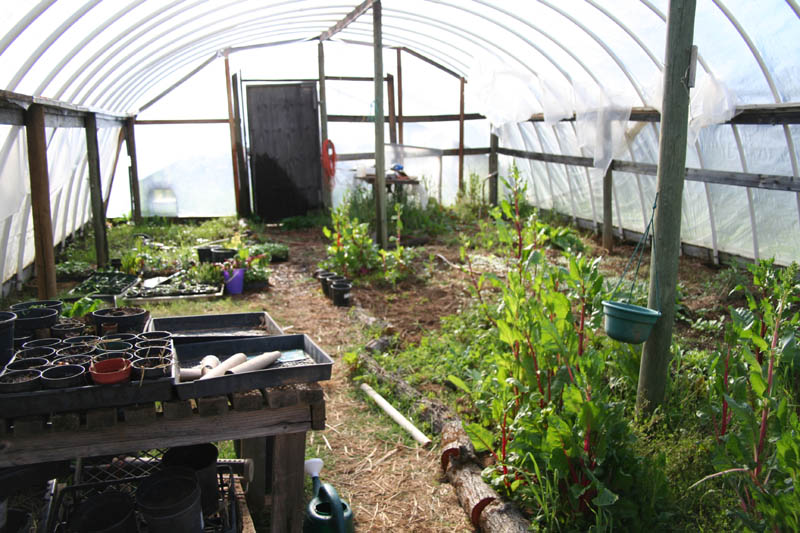…or: the WEEDS part – but really, I AM trying to work the soil and the vegetation to have it be lush and productive as well as economical and sustainable. Having started 30 years earlier would have been good …but hey …..
This is about YOU CAN GARDEN! Blog posts about gardening will be in category gardening and tagged with specifics.
Starting seeds and rehabilitating the greenhouse, which also serves as workbench and food storage for the moment.
Since the start of the projects in 2012, I learned a lot about soil, the most important ingredient for healthy plant…oh wait, that would be water. Regardless, being in drought stricken California, water and water management is hugely important. This also led me to investigate and try out the hugelkultur, raised beds, ollas, lasagna-no till gardening, companion planting, cover crops. So far – the verdict for my budget, circumstances, physical ability and – last but not least, soil health is:
- no till, trying to completely eliminate any kind of digging. The web of life in the soil is very efficient and potent if allowed to do it’s work without interference, so I try to not diturb it. I layer using cardbord, all the paper bags from the organic chicken feed, wood chips, leaves, grass clippings, kitchen scraps that the chickens didn’t get and deep litter – cover and wait.
- Hugelkultur – I LOVE it and tried one, but so far all it became is a rodent den and it will take a couple of more years to come to fruition. Granted, I did not have enough soil for the top, but I also left too many spaces in the underbuild. But the digging was very labor intensive. This will work well if you have a family with teenager or friends willing to help. I would LOVE to have a properly built hugelkultur bed – but I am not gonna go there again by myself.
- Designated garden beds– I border the garden beds with logs or markers to help me not walk on them as the resulting compaction will greatly decrease yield, and we have heavy clay to start with.

Borders can be anything that reminds you to not walk on the bed itself.
- Raised beds – YES mine range from 2×3 to 4×8 feet in size and have a depth of between 8 inches to no more than 2 feet high. You will need to do a LOT of lasagna layers for that last one :). Are they real raise beds as in altogether off the ground – no, but I call them raised anyway ….and as time goes by, they will get more and more raised. Some have hardware cloth at the bottom, and I wish they all did.
- Cover crops – Where there are no garden beds…I sow clover and other cover crops and see what grows. Bare soil is the worst in terms of water loss and soil health. The choice of cover crops varies with season and water availability. Cover crops improve your soil either by fixing nitrogen or deep tap roots which loosen the soil and bring nutrients from the deep more to the surface.
- Composting – NOTHING gets wasted!!! – all plant based kitchen scraps and egg shells get used, and while at first I did a separate compost bin, I am now just making another raised bed and fill it up with kitchen scraps, wood chips, old wood and if i have more than enough, leaves, all plant residue, grass clippings – except our walnut leaves – the juglone can inhibit growth for plants sensitive to it.
- Watering – drip when possible, dense plant cover everywhere, ollas if you can afford it.
- Plant Diversity – the more diverse your plant population – the more resilient and pest resistant the plants will be. While some caution needs to be exercised regarding potentially invasive plants – I aim for and am working on maximum plant diversity, with special attention to plants beneficial for pollinators. Do NOT be afraid of so called weeds either, just help them grow where it does not directly interfere as much with your crop. Depending on the climate in your area, plants will vary somewhat.
- Companion planting – some plants grow better and are more protected in proximity with certain other plants. Some inhibit each other. Really good to know when planning your garden.
- Soil supplements – hm …I don’t use any. There is the cost factor, work factor but most importantly: mother nature does not check soil ph or lug in rock phosphate or green sand. Granted, a planned vegetable garden is not exactly as things would grow in mother nature – but fundamentally, in self sustainability, I don’t want to depend on bringing in things from the outside. I still buy a lot of chicken feed, but soil building with all the decaying plant leftovers and kitchen scraps and exposure to foraging chickens – it is gonna have to work like that. This makes plant diversity even more important. Are my veggies less nutrient dense than if I had supplemented the soil – probably, maybe, for a few years – maybe.
- Pesticides – NOT so far I have not had to use any – only picked up a few cucumber beetles. Basically, if I have “pests”, my plant mix, watering or attention was off….so back to the drawing board. I did use dilute milk spray on my roses however, and yes, it works to prevent those black spots on yellow leaves. I grew a Mayer lemon tree from seed and brought it in for the winter…and now it has scales…I think I might apply oil right on the scale, not sure yet. But basically, those kinds of things are as far as I am willing to go with pesticides. I simply don’t want to kill beneficial insects or soil microbes with pesticides.
- Berms – yes I tried that, liked it but then – no more digging for the time being – except for the upcoming frog pond.
- Chickens – yes, I rotate the chickens in various parts of the garden. chickens will eat everything you’d like to eat – so – they are quite incompatible with a productive garden – at a certain time of year. The rest of the time: fertilize away.
- Fertilizer – if I have self made compost, yes, other than that, the deep litter from the chicken coop is like miracle grow.
- Wood chips – to cover garden beds – yes, if we happen to have some.

